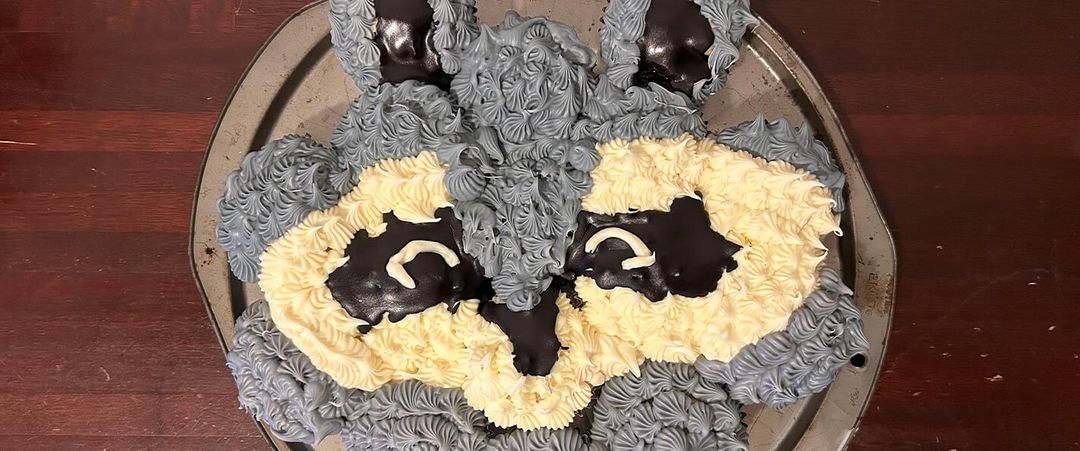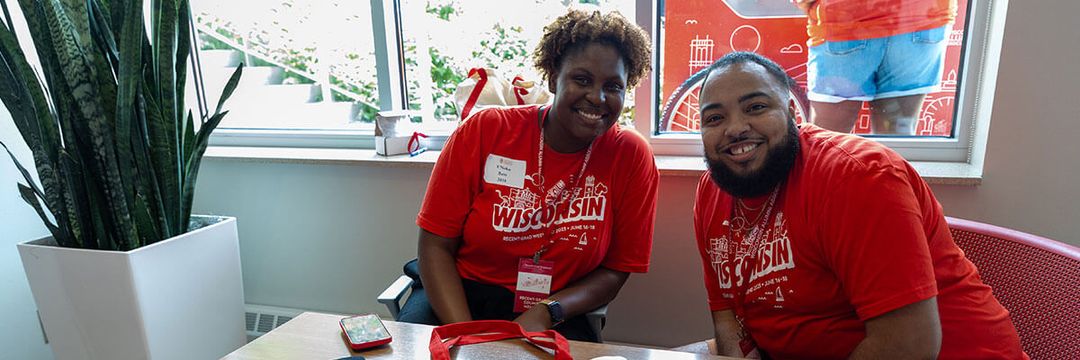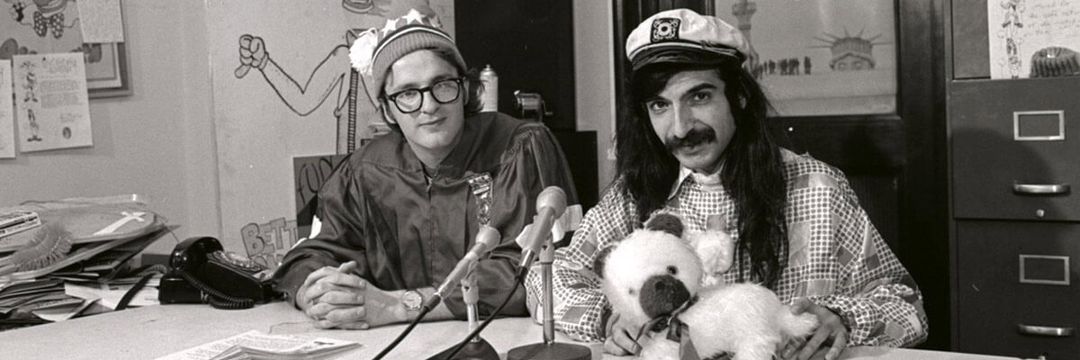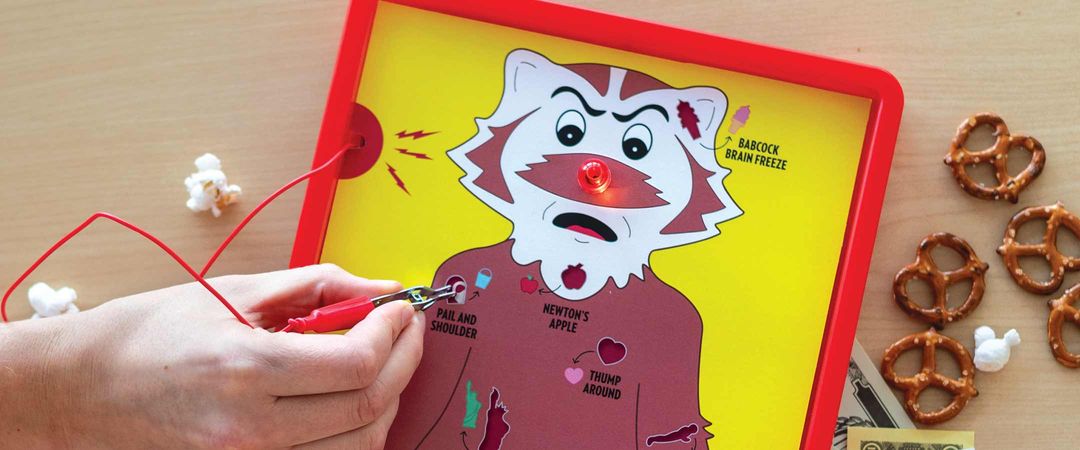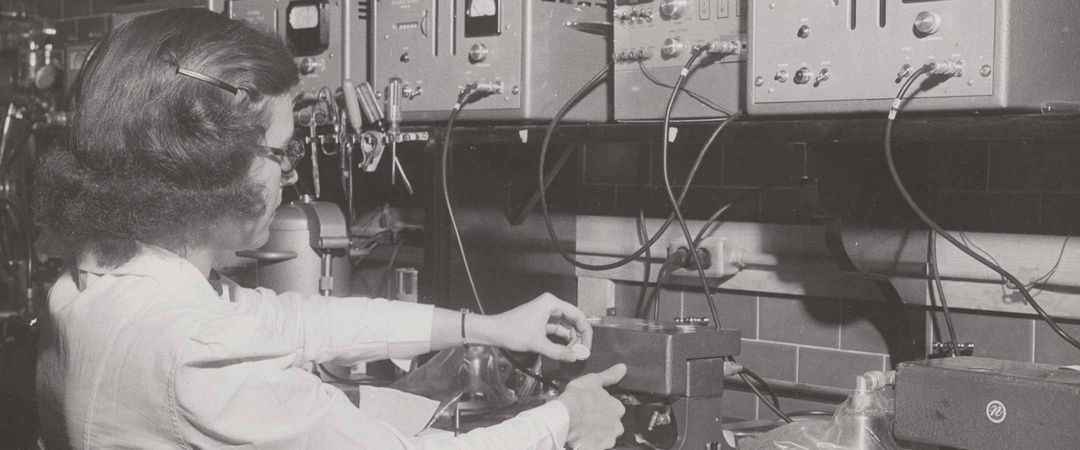Like the state of Wisconsin, the inherent beauty of a cheese board lies in its versatility. Perhaps you’re renowned among friends and family for your elaborate platters adorned with a smorgasbord of artisan delicacies. Maybe you could make a meal of cheese, crackers, and the pickles you canned yourself last summer. Maybe you forgo the board entirely and eat slices of summer sausage and sharp Wisconsin cheddar straight off the knife. However you take it, cheese boards capture the essence of Wisconsin in the simplicity of their ingredients and the endless ways in which flavors and textures intermingle to create something both familiar and unique.
These boards also can be effortlessly sustainable — if you source them right. Like a tailgate depends on the quality of its beers, brats, and Bloody Marys, any cheese board worth its salt starts with quality, fundamental ingredients. In Wisconsin, you need not look far for them.
Whether your go-to combo is a cracker smeared with goat cheese and drizzled with local honey, a handful of assorted nuts, or the no-fuss classic of cheese pinched between charcuterie, it’s not hard to assemble a spread within the Wisconsin border and brought to you by fellow Badgers.
Cranberries
Across central and northern Wisconsin, cranberry marshes have sustained the state’s official fruit crop for decades. According to Tom Lochner ’77, executive director of the Wisconsin State Cranberry Growers Association (WSCGA), many marshes are family businesses that span upwards of seven generations.
Much like the fruit, Wisconsin’s cranberry community is small but mighty: around 250 growers across the state tend 21,500 acres of vines. By comparison, more than 4 million acres are dedicated to corn, the state’s largest agricultural crop. Still, Wisconsin is the world’s leading cranberry producer, providing half of the world’s supply and averaging more than 500 million pounds of fruit per year.
It’s only natural for the state’s flagship university to support the family business. In partnership with the UW and the USDA Agricultural Research Service, the WSCGA’s Wisconsin Cranberry Research and Education Foundation established the first cranberry research station in Wisconsin in 2017. It serves as a site for experimentation with growing techniques and new cultivars, two of which — HyRed and Sundance — were developed in the UW’s Department of Horticulture.
“In the fall, there’s not a better picture in the state than the cranberry harvest, where they have red berries on blue water against the fall colors and the blue sky,” Lochner says.
While ripe cranberries are beautiful to witness bobbing on the flooded marshes, the fresh fruit might be too tart a flavor to serve guests. Only 3 percent of Wisconsin’s cranberry crop is sold as fresh fruit. The partnership between the WSCGA and the UW has developed a new cultivar called the Sweetie that, true to its name, offers a hint more edibility than the standard variety, though it has yet to be grown commercially.
The other 97 percent is turned into cranberry products. The dried variety adds a sweet, chewy texture to salty nut mixes or folded into goat or cream cheese spreads. The berries can also be cooked down with sugar and other fruits to create jams. Meat crafters even incorporate them into summer sausages, sometimes alongside Wisconsin cheeses, creating a taste of the entire state in one sweet, salty, and savory bite.
Honey
As a kid, Doug Hauke ’79 wanted nothing to do with the bees his father kept on the family farm. When he inherited the hives after college, he planned to keep his beekeeping small-scale. Today, he runs Hauke Honey, the largest honey-producing operation in Wisconsin. It’s just one of the many ways his bees have kept him on his toes for the past 40 years.
“It’s a constant learning process,” Hauke says. “Every time I think I have my thumb on the bees and I’m patting myself on the back as Joe-genius beekeeper, the bees just throw a loop at me.” It’s a humble take from a beekeeper who operates one of the most sophisticated honey-producing facilities in the state, an accolade he attributes to his time at the UW. While studying bacteriology and virology, he took a job at a campus bee laboratory where he learned lessons in honeybee management, artificial insemination of queens, disease treatment, and wax and honey production.
The experience renewed his passion for honeybees and continues to give him an advantage in the industry today. His facility in Marshfield, Wisconsin, houses a computerized extracting system and the only high-tech wax-melting system in the Midwest. Thanks to refrigerated storage, his is also one of a few companies in Wisconsin that has never required preservatives to prevent parasites in his honeycomb.
“When you come and look at my plant, you’re going to find a very updated and clean facility, one you walk in and would be proud to buy a jar of honey out of,” Hauke says.
He only gets to enjoy his impressive setup for half of the year. He spends the other six months on the road, wintering his bees in eastern Texas and shipping hives out to California to pollinate the almond crop for Blue Diamond.
Hauke Honey once supplied to MillerCoors (now Molson Coors), but more and more companies are turning to cheaper, imported honey. This can pose big problems for domestic produce. “Anything with color in the grocery store is pollinated by beekeepers,” Hauke says. With fewer domestic bees, who will pollinate the nation’s crops?
Hauke does his part in answering this question through service in organizations like the National Honey Board and with Project Apis m., which funds and directs honeybee research.
In the meantime, when he’s not hauling hives around the country or traveling for beekeeping conferences, you can find him back where it all started.
“My favorite part is when I’m back in Wisconsin on a weekend, out by myself, working bees,” Hauke says. “It’s quiet, I’m in the bee yard, I don’t have anybody with me, and that’s the way it was when I started beekeeping.”
Cheese
Where the namesake element of a cheese board is concerned, the possibilities (and the puns) are limitless. You could build an entire board composed solely of different cheeses and still never get board (see?). Heck, you could fashion the board itself out of a sturdy enough cheddar. While the perfect lineup is in the eye of the board-holder (okay, last one), it’s wise to curate a variety, and it only takes three Badger cheesemakers to feature a barnyard’s worth of hand-crafted, artisan cheese products on your platter.
Anna Landmark ’99 — Landmark Creamery, Paoli, WI
Anna Landmark ’99’s cheesemaking journey started with Freckles, politics, and too much pudding.
Between the two goats and the milking shorthorn cow (Freckles) they kept on their hobby farm, Landmark and her husband had an abundance of milk. When they ran out of uses for it (and grew tired of finding new ones), Landmark decided to draw upon her Swiss and Norwegian dairy-farmer roots and try her hand at cheesemaking. It has since become a second career: in 2014, she partnered with food writer Anna Thomas Bates to open Landmark Creamery.
Wisconsin is the only state in the U.S. that requires cheesemakers to be licensed in order to produce and sell cheese. (Perhaps we have that mandate to thank for Wisconsin cheese’s superior quality.) Landmark got hers through the UW’s Center for Dairy Research and began her apprenticeship at Cedar Grove Cheese in Plain, Wisconsin. Here, she was introduced to making sheep milk cheese, which became the specialty of Landmark Creamery.
“[We] had started raising sheep on our hobby farm, and I really liked how light on the land they are,” Landmark says. “The cost of starting a sheep dairy is quite a lot lower than the cost of going into milking cows. ... You need less land, less resources to get started, and I like that sustainability aspect of it.”
Sheep milk cheeses, like manchego and roquefort, are also not commonly made in the United States, providing a niche market in which Landmark quickly made a name. While the hobby-farm animals have found new homes, Landmark Creamery still sources its milk from local sheep dairies. Cheese is typically made on the same day as pickup, resulting in fresh, creamy, award-winning products.
When featuring their cheese, Landmark subscribes to the idea of terroir, which suggests that products grown in the same region harbor similar flavor characteristics. “I really like to feature our cheeses with locally grown meats. There’s that same soil base and that same grass base, and I think that carries through on those flavors and makes the products complement each other better,” Landmark says.
She recommends doing this with their Anabasque cheese accompanied by green olives and fig jam. For dessert, she pairs their grainy yet caramelly Pecora Nocciola with after-dinner coffee.
Jim Ostrom ’92 — LaClare Family Creamery and Saxon Creamery, Malone, WI
“I fell in love with the dairy industry as a kid and haven’t been able to shake it since,” says Jim Ostrom ’92. Ostrom has worked in dairy about as long as one can without having been born into it, though he was certainly born to do it.
After graduating from the UW with a degree in agricultural economics, Ostrom partnered with John Vosters ’87 and Todd Willer ’92 to found Milk Source, an agricultural company that manages dairies throughout the Midwest, including family-owned businesses such as Saxon Creamery and LaClare Family Creamery in Malone, Wisconsin. While Saxon Creamery sources its pasture-grazed cow milk from a local homestead, LaClare offers a unique alternative as a maker of goat cheese.
“We have a flavor advantage over our competitors in the goat cheese business because we’re able to make our cheese out of the freshest milk because our milk is produced right near the farm,” Ostrom says.
Customers can see for themselves: LaClare invites the public to its facility to view the cheesemaking process and, on a nice day, visit with the goats.
“You can take hyperprocessed food made by a multinational [corporation], and it’s watered down. Its flavor is not material,” Ostrom says. “Or, you can pick some food that’s made by local farmers or local artisans and really get an understanding about the tradition of making Wisconsin cheese.”
The key to a successful cheeseboard, he says, is variety — three or four cheeses — and the ability to share information about each one. For Ostrom, an “approachable” cheeseboard includes LaClare’s chèvre spread on a plain cracker, LaClare’s raw goat milk cheddar, and cubes of Saxon’s award-winning Big Ed’s Gouda.
Andy Hatch ’07 — Uplands Cheese Company, Dodgeville, WI
Andy Hatch ’07 was born and raised in the Dairy State but not in the dairy industry. That hasn’t stopped him from turning cheesemaking into the family business. After earning his degree in dairy science, Hatch pursued his cheesemaking license through the Center for Dairy Research. He completed his apprenticeship at Uplands Cheese Company in Dodgeville, Wisconsin, and never left: after purchasing the farm from its original owners, Hatch and his business partner, Scott Mericka, now run the creamery and farmstead, respectively, along with their families.
“We’re unusual in that we’re a farmstead cheese business, which means that we only use milk from our own cows to make cheese. That gives us total control over the raw material, which gives us more control over the quality of the product,” Hatch says.
He keeps things simple; the creamery produces only two cheeses. In November and December, they offer Rush Creek Reserve, a soft, spreadable cheese that comes wrapped in a strip of spruce bark and whose release is so anticipated, Hatch’s wife, Caitlin Hatch ’05, paints a unique poster to mark each year’s batch.
In the spring, summer, and fall, Uplands produces Pleasant Ridge Reserve. It’s made while the farm’s cows are grazing on fresh pasture and giving milk that yields a cheese at once sweet, savory, and salty. The narrow focus and meticulous timing of this cheesemaking isn’t for naught: Pleasant Ridge Reserve is the most-awarded cheese in American history.
“As an apprentice, I worked for several years in different parts of Europe — France and Italy,” Hatch says. “There is no place in the world I would rather make cheese than southern Wisconsin. The resources and the history and the support we have here are the best in the world.”
Hatch recommends including Pleasant Ridge Reserve on a cheese board along with Madison-made Potter’s crackers.
Charcuterie
With the simple addition of a few slices of prosciutto or smokey chunks of dry sausage, a cheese platter becomes the oh-so-posh charcuterie board. Charcuterie comes from the French chair (flesh) and cuit (cooked), but we can pretend it just means “tiny meats,” for the squeamish and/or vegetarians at the gathering. There are many ways to
beef up a board that vary in taste, texture, and tradition.
Old-School Standbys
Fritz Usinger ’80 arrived at the UW already knowing how the sausage gets made. He spent high school summers mastering the family craft at Usinger’s Sausage in Milwaukee, an institution founded by his great-grandfather, a German-trained sausage maker, in 1880. Though intent on studying business, he popped into an informational session about the Meat and Animal Sciences program. “That sealed the deal,” he says.
Usinger is the fourth generation to run the family business, bringing Old World products and modern flavors to sausage- lovers across the Midwest and beyond. The secret to remaining a Wisconsin staple after 140 years? Sticking to what they know. Unlike other mass-produced sausage products, Usinger’s uses fresh ingredients like garlic and onions, the slow-and-steady technology of a pit smokehouse, and the recipes and techniques perfected by his great- grandfather in 1880.
While a hot, juicy brat is the poster sausage of Wisconsin cuisine, it’s better suited to a bun than to a board. For entertaining, Usinger recommends two drier, smokier Wisconsin classics: summer sausage and landjaeger. Products of practicality, both sausages were traditionally produced in the winter months and dry smoked in order to keep through summer, before modern refrigeration. Summer sausage owes both its lasting quality and flavor to fermentation: as the process takes place in the smokehouse and lowers the sausage’s pH, the sausage becomes more acidic, producing its signature tang and precluding the growth of pathogenic bacteria.
Landjaeger is summer sausage’s slimmer, drier cousin and is produced through a similar process. Also known as “hunter’s sausage,” the dry, coarsely cut links were commonly stashed in hunters’ pockets for on-the-go protein, and they’re the precursor to today’s meat snack sticks. According to
Jeff Sindelar, UW professor of meat science and animal biologics, landjaegers are also typically square rather than round thanks to a traditional pressing process from which the softer summer sausage is spared.
To fully appreciate the flavors packed into their summer sausage, Usinger keeps it simple: enjoy it at room temperature and thinly sliced. As for how many thin slices one should consume, we leave that to your willpower.
New-Age Nuance
Jonny Hunter ’05, MPA’11 got his bachelor’s degree in English and his master’s degree in public policy. He’s never held public office, but his name is ubiquitous in Madison because of his work with the Underground Food Collective, a multifaceted food organization that’s taken on everything from events and catering to brick-and- mortar businesses.
While many of Underground’s endeavors have already come and gone, their name can still be found on Wisconsin menus due to the endurance of Underground Meats, a small-batch charcuterie business that prides itself on locally sourced ingredients and labor-intensive processes that yield small quantities with big flavor — flavors like black garlic and ghost pepper that might seem unusual but come from familiar sources.
According to Hunter, locally sourced meats and ingredients owe their premium flavor and environmental sustainability to farmers who are conscientious about both land use and the treatment of their animals. Underground partners closely with the farmers who produce the ingredients that make Underground’s meats unique.
“If you want to have the most delicious food, you want to have something that's grown for flavor, and you can’t do that [with] a mass agricultural product,” Hunter says.
Joslyn Mink ’11, MS’13 is one of many Underground alumni who have gone on to pursue their own endeavors in the food industry, though her culinary work is still guided by its philosophy of sustainability. Prior to her current role as kitchen director of Madison’s new Settle Down Tavern, Mink was most recently the manager of Underground Butcher. There, in true “nose-to-tail” fashion, she learned the art of breaking down whole animals and introducing customers to new uses for unfamiliar cuts with flavor and potential that's often overlooked. In addition to processing meats, Mink also served as cheesemonger and had a hand in Underground’s pickling and preserving of local fruits and vegetables. “During those transformation processes, that’s where the art comes in of pulling out flavor profiles that already existed there and celebrating them,” Mink says. “When you taste it, all of a sudden it’s like you learn something else about the product.”
Neither flavor nor texture are in short supply at Underground. Hunter recommends a balance of both with products like their ’nduja and sobrasada, spreadable salamis with a calabrian-pepper kick; whole-muscle cuts like salted, cured hams to counter the softness; and a black- garlic hard salami for something “funky and unexpected.”
In the spirit of celebrating unique flavors, Mink recommends a dry salami-centric approach that includes Underground’s Wisco Old Fashioned salami, which features brandied cherries, orange peel, and red pepper flakes; a bright and floral calabrian salami that uses locally grown peppers; a simple and garlicky saucisson sec; and a classic Tuscan salami.
Hazelnuts
When Jason Fischbach started as an agricultural agent with the UW’s Division of Extension in northern Bayfield and Ashland counties in 2007, he immediately recognized local farmers’ struggles to grow commodity crops like soy, corn, and alfalfa, which are more amenable to southern Wisconsin’s climate and terrain. What did grow wildly and in abundance was the American hazelnut.
In taste tests, American hazelnuts, with their small kernels and thick shells, are often rated similar to — if not better than — the European variety, which dominates the hazelnut market but succumbs quickly to Midwestern winters and disease. This has researchers wondering whether they can achieve a cold-hardy, disease-resistant crop to support a burgeoning hazelnut industry in the Midwest. Based on the work of the Upper Midwest Hazelnut Development Initiative (UMHDI), early signs point to yes.
The UMHDI is a collaboration between the UW and the University of Minnesota to bolster a hazelnut industry in our shared backyard. One step UW researchers are exploring is hazelnut harvest. Dave Bohnhoff MS’85, PhD’88, professor emeritus of biological systems engineering, is exploring harvesting technology by looking at existing agricultural machinery, such as blueberry and olive harvesters. He also studies methods of separating the nut from the cluster in which it grows, and later, “sifting and winnowing” shells from kernels.
“What we’re trying to do here in Wisconsin is harvest things a little bit differently than they do in the rest of the world,” Bohnhoff says. European hazelnut growers allow nuts to fall to the ground before collecting them. Bohnhoff believes harvesting them from the plants will be cleaner, more sustainable, and more environmentally friendly.
Efforts to develop new varieties of the American hazelnut have existed in the region for decades. Horticulture professor Julie Dawson is studying the genetics of important traits in the nut in order to develop varieties that could meet the needs of the hazelnut industry. “When you cross two bushes, you would take pollen from one, put it on a flower of another, and get the seed,” Dawson says. “It takes four years before that produces nuts, so we’re just at the beginning.”
Still, the UMHDI is already preparing a market for hazelnuts in the Midwest. It has also partnered with the Wisconsin- based American Hazelnut Company, which produces hazelnut products like flours and snack foods, to bolster their business. “The interest is there, and the markets are there, and the processing capacity is there,” Fischbach says. “We just need the plants.”
When they’re not enrobed in a truffle or pulverized into a spread, Fischbach recommends enjoying roasted hazelnuts by the handful — or piled neatly in a dish as a crunchy complement to a cheese board.





